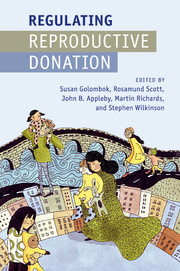32 results
Marine Important Bird and Biodiversity Areas in the Chagos Archipelago
-
- Journal:
- Bird Conservation International / Volume 33 / 2023
- Published online by Cambridge University Press:
- 26 August 2022, e29
-
- Article
-
- You have access
- Open access
- HTML
- Export citation
Trends in referrals to liaison psychiatry teams from UK emergency departments for patients over 65
-
- Journal:
- BJPsych Open / Volume 7 / Issue S1 / June 2021
- Published online by Cambridge University Press:
- 18 June 2021, pp. S311-S312
-
- Article
-
- You have access
- Open access
- Export citation
First dinosaur from the Isle of Eigg (Valtos Sandstone Formation, Middle Jurassic), Scotland
-
- Journal:
- Earth and Environmental Science Transactions of The Royal Society of Edinburgh / Volume 111 / Issue 3 / September 2020
- Published online by Cambridge University Press:
- 27 August 2020, pp. 157-172
- Print publication:
- September 2020
-
- Article
-
- You have access
- HTML
- Export citation
Identifying the Underlying Mechanisms of Change During Acceptance and Commitment Therapy (ACT): A Systematic Review of Contemporary Mediation Studies
-
- Journal:
- Behavioural and Cognitive Psychotherapy / Volume 47 / Issue 3 / May 2019
- Published online by Cambridge University Press:
- 04 October 2018, pp. 332-362
- Print publication:
- May 2019
-
- Article
- Export citation
3 - Finding the Facts
- from Part II - Selected Writings on Monitoring, Reporting, and Fact-Finding
-
-
- Book:
- HPCR Practitioner's Handbook on Monitoring, Reporting, and Fact-Finding
- Published online:
- 13 October 2017
- Print publication:
- 12 October 2017, pp 148-185
-
- Chapter
- Export citation
Developing Services for Patients with Depression or Anxiety in the Context of Long-term Physical Health Conditions and Medically Unexplained Symptoms: Evaluation of an IAPT Pathfinder Site
-
- Journal:
- Behavioural and Cognitive Psychotherapy / Volume 44 / Issue 5 / September 2016
- Published online by Cambridge University Press:
- 20 May 2016, pp. 553-567
- Print publication:
- September 2016
-
- Article
- Export citation
Index
-
- Book:
- Regulating Reproductive Donation
- Published online:
- 05 March 2016
- Print publication:
- 01 April 2016, pp 373-382
-
- Chapter
- Export citation
Part I - International, cross-border and global issues
-
- Book:
- Regulating Reproductive Donation
- Published online:
- 05 March 2016
- Print publication:
- 01 April 2016, pp 37-162
-
- Chapter
- Export citation
11 - Gamete donor motives, payment and child welfare
- from Part III - Donors
-
-
- Book:
- Regulating Reproductive Donation
- Published online:
- 05 March 2016
- Print publication:
- 01 April 2016, pp 232-258
-
- Chapter
- Export citation
Contents
-
- Book:
- Regulating Reproductive Donation
- Published online:
- 05 March 2016
- Print publication:
- 01 April 2016, pp v-vii
-
- Chapter
- Export citation
Part IV - Information about donors
-
- Book:
- Regulating Reproductive Donation
- Published online:
- 05 March 2016
- Print publication:
- 01 April 2016, pp 291-372
-
- Chapter
- Export citation
Editors, contributors and discussants
-
- Book:
- Regulating Reproductive Donation
- Published online:
- 05 March 2016
- Print publication:
- 01 April 2016, pp viii-ix
-
- Chapter
- Export citation
Copyright page
-
- Book:
- Regulating Reproductive Donation
- Published online:
- 05 March 2016
- Print publication:
- 01 April 2016, pp iv-iv
-
- Chapter
- Export citation
Acknowledgements
-
- Book:
- Regulating Reproductive Donation
- Published online:
- 05 March 2016
- Print publication:
- 01 April 2016, pp x-xii
-
- Chapter
- Export citation
Part III - Donors
-
- Book:
- Regulating Reproductive Donation
- Published online:
- 05 March 2016
- Print publication:
- 01 April 2016, pp 205-290
-
- Chapter
- Export citation
Part II - How many children per donor?
-
- Book:
- Regulating Reproductive Donation
- Published online:
- 05 March 2016
- Print publication:
- 01 April 2016, pp 163-204
-
- Chapter
- Export citation
Introduction
-
-
- Book:
- Regulating Reproductive Donation
- Published online:
- 05 March 2016
- Print publication:
- 01 April 2016, pp 1-13
-
- Chapter
- Export citation

Regulating Reproductive Donation
-
- Published online:
- 05 March 2016
- Print publication:
- 01 April 2016
Comparison of Post-Operative Lordosis with the PEEK Cage and the Cervical Plate
-
- Journal:
- Canadian Journal of Neurological Sciences / Volume 38 / Issue 1 / January 2011
- Published online by Cambridge University Press:
- 02 December 2014, pp. 72-77
-
- Article
-
- You have access
- Export citation
Guest Editorial: A Complex Web of Questions
-
- Journal:
- Cambridge Quarterly of Healthcare Ethics / Volume 22 / Issue 1 / January 2013
- Published online by Cambridge University Press:
- 04 December 2012, pp. 4-7
-
- Article
- Export citation



